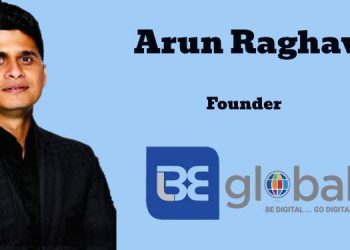Since the subject of this article is 30 seconds of advertising, before I express anything about it, I would like to give readers a perspective on the duration of the of the game in the ad world. In the recent past, one has seen different kinds of waves affect the duration of video format ads.
From the classic, Utopian 30 seconds, there was suddenly this newfound love for ‘long format’ films that lasted anywhere between 90 seconds and 180 seconds—and in a few cases, even longer. I would give credit to Google’s Partition Friends film, directed by Amit Sharma. That film became a benchmark, and soon there was a rush for longer-format films to be released on YouTube. Then the reality check happened, and soon the long-format films were restricted to 90 to 100 seconds.
Then Facebook experimented with the legendary ‘ThumbStoppers’, and every brand manager expected their agencies to replicate the efficacy of communication in 10–15 seconds. Soon the era of YouTube pre-rolls and the terrifying unwritten rule of ‘bring your brand in 5 seconds’ came in. Media costs went through the roof—obviously, the mind-boggling figures of IPL telecast rights acquisition had to be compensated—and the restrictive 30 seconds of the past started looking like a flight of fantasy because now everyone wants a ‘kadak’ 15 seconder. If you lived like a saint in your past life, then you may get 20 seconds.
So now 30 seconds are a dream for the creative teams at the ad agencies.
No one voluntarily sits in front of the screen to watch an ad. It’s the foot-in-the-door kind of scenario where you have to be engaging and convincing enough to make your audience not only listen to you but also buy whatever you are selling. So your writing should be relevant, logical, and engaging and you ad length must be at that sweet spot.
For me personally, almost 25 years of my life have been spent churning out stories lasting 30 seconds. In other words, 25 years of my life were measured by what I did in 30 seconds! But these 30 seconds of storytelling made me a better storyteller. I got trained for the economy of words.
The 30 second ad length allows advertisers to deliver lines loaded with punches or undercurrents of emotions without tiring the consumer.
I believe one of the major reasons for this shift to a 30-second ad format is the advent of social media platforms. Social media platforms have fundamentally reshaped the consumption and perception of advertisements. Platforms like Facebook, Instagram, and TikTok have introduced new dynamics where users engage in continuous scrolling—an activity often referred to as ‘doom scrolling
The 30-second sweet spot is one of the best ways to mitigate this effect. A 30-second ad gives brands an opportunity to build positive brand associations with the viewer and establish neutral pathways. As per research, while 15-second ads drive 46% higher site visits, 30-second ads drive 24% higher conversions. 30-second ads deliver a stronger emotional connection with viewers.
As users increasingly move towards mobile devices for content consumption, advertisers are optimizing their creatives for quick engagement and easy consumption. They are meeting teh consumer where they are and in a timeframe that works for them i.e. online in and in 30 seconds or less.
The 30-second commercial, with its structured format and focused messaging, aligns well with these preferences, offering a balance between delivering a compelling narrative and respecting the viewer’s limited attention span. The secret lies in understanding what makes them unique and powerful in today’s media landscape:
- Concise Storytelling: The 30-second format demands precision in storytelling. It forces brands to distill their message to its essence. There is no leeway for unnecessary details. One need to focus on what truly resonates with the audience.
- Impactful Messaging: With limited time to capture attention, advertisers must craft messages that are clear, memorable, and emotionally engaging. Every second counts, making each frame and word choice critical to the overall impact of the commercial.
- Versatility: Despite the trend towards shorter formats, 30-second commercials offer a versatile canvas. They can be adapted for various platforms—from television to digital pre-rolls—maintaining relevance across different audience segments and viewing behaviors.
- Cost Efficiency: While media costs continue to rise, the 30-second spot is a cost-effective option compared to longer formats. It strikes a balance between reach and investment, making it accessible for brands to maximize their advertising ROI.
The effectiveness of 30-second commercials is that they are a blend of art and science, a mix of creativity and concise communication.

















